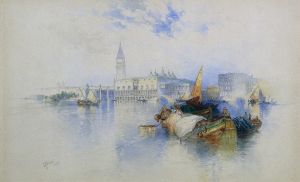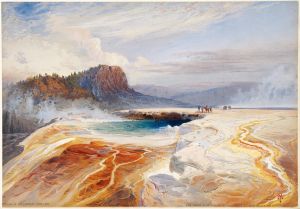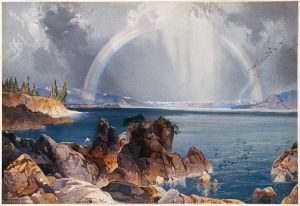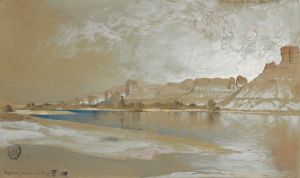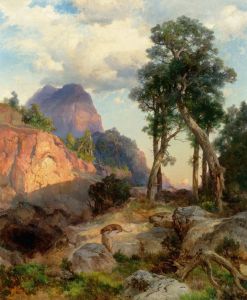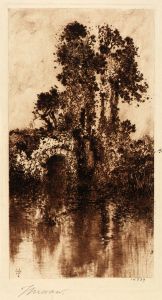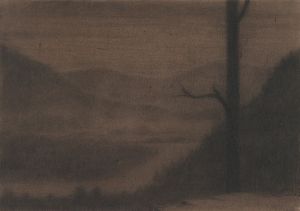
Mist in Kanab Canyon, Utah
A hand-painted replica of Thomas Moran’s masterpiece Mist in Kanab Canyon, Utah, meticulously crafted by professional artists to capture the true essence of the original. Each piece is created with museum-quality canvas and rare mineral pigments, carefully painted by experienced artists with delicate brushstrokes and rich, layered colors to perfectly recreate the texture of the original artwork. Unlike machine-printed reproductions, this hand-painted version brings the painting to life, infused with the artist’s emotions and skill in every stroke. Whether for personal collection or home decoration, it instantly elevates the artistic atmosphere of any space.
"Mist in Kanab Canyon, Utah" is a painting by the renowned American artist Thomas Moran, who is celebrated for his dramatic landscapes of the American West. Moran, born in 1837 in Bolton, England, immigrated to the United States with his family as a child. He became one of the most prominent painters of the Hudson River School, a mid-19th century American art movement embodied by a group of landscape painters whose aesthetic vision was influenced by romanticism.
Thomas Moran's work is often associated with the exploration and documentation of the American frontier. His paintings played a significant role in the establishment of the National Parks system in the United States. Moran's vivid and detailed depictions of the Western landscapes captured the imagination of the public and government officials alike, contributing to the preservation of these natural wonders.
"Mist in Kanab Canyon, Utah" exemplifies Moran's mastery in capturing the sublime beauty and grandeur of the American West. Kanab Canyon is located in southern Utah, an area known for its stunning geological formations and vibrant colors. The painting likely depicts the canyon shrouded in mist, a common atmospheric condition that adds a sense of mystery and depth to the landscape. Moran's use of light and shadow, along with his attention to detail, creates a dynamic composition that draws the viewer into the scene.
Moran's technique often involved the use of rich, luminous colors and meticulous brushwork to convey the textures and forms of the natural world. His ability to depict the interplay of light and atmosphere is evident in "Mist in Kanab Canyon, Utah," where the mist softens the rugged landscape, creating a dreamlike quality. This approach not only highlights the physical beauty of the scene but also evokes an emotional response, inviting viewers to experience the awe and wonder of the natural environment.
Throughout his career, Moran was deeply influenced by the landscapes he encountered during his travels. His journey to the American West in the 1870s, particularly his participation in the Hayden Geological Survey of 1871, was pivotal in shaping his artistic vision. The survey, which explored the Yellowstone region, provided Moran with the opportunity to sketch and paint some of the most breathtaking and uncharted territories of the United States. These experiences solidified his reputation as a leading landscape painter and advocate for the conservation of America's natural landscapes.
"Mist in Kanab Canyon, Utah" is a testament to Moran's enduring legacy as an artist who captured the majesty of the American wilderness. His work continues to inspire appreciation for the natural world and serves as a reminder of the importance of preserving these landscapes for future generations. While specific details about the creation and current location of this particular painting may not be widely documented, its significance lies in its representation of Moran's broader body of work and his contribution to American art and environmental conservation.





